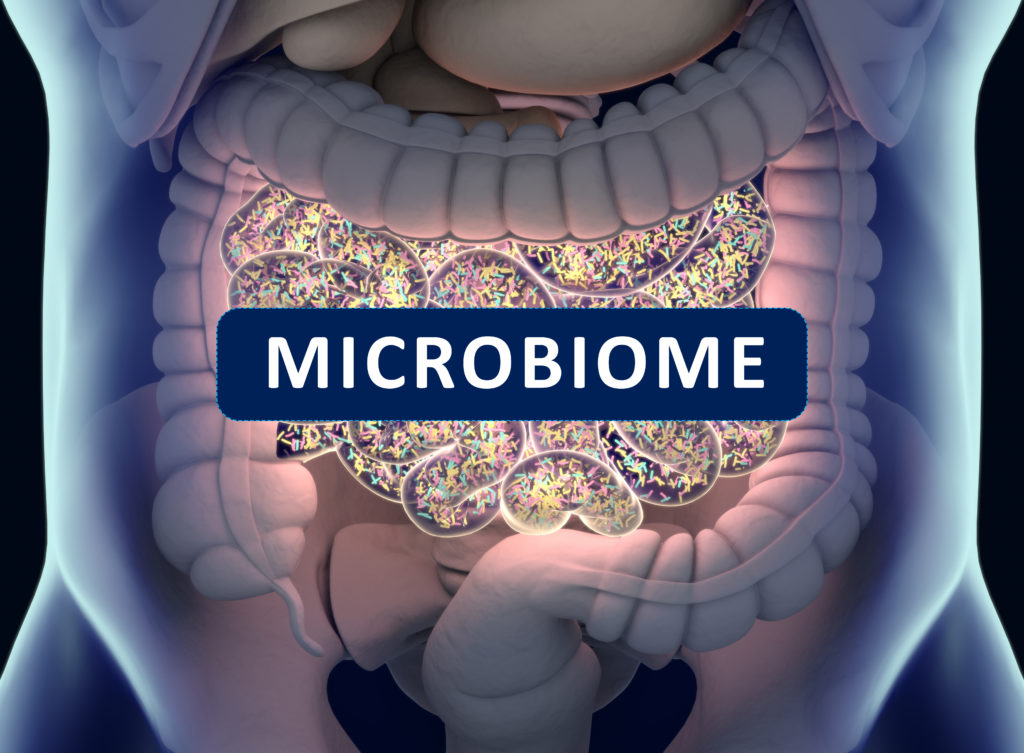Before you were born, you were mostly protected from the microbes of the world. Cradled in the protection of your mother’s womb, you didn’t have the microbiome you have today. However, from the day you were born, through birth, breastfeeding, and exposure you began building the microorganism ecosystem that now lives in your gut.
As an adult, you have over 100 trillion microorganisms living in your gastrointestinal tract. Weighing between four to five pounds, this ecosystem weights more than your brain!
Fascinating, isn’t it?
The organisms living in your gut are abundant and a central part of your health. With over 80 percent of the immune system cells residing in your gut, a healthy microbiome is the foundation of your health.
So, what makes a gut microbiome healthy? Let’s take a closer look.
How Your Gut Microbiome Keeps You Healthy
Research has found that diversity and redundancy in the species of microbes is key to a healthy microbiome. To understand why that is, consider another ecosystem.
Imagine a marine ecosystem with anemones, fish, crabs, hard, and soft corals. In a healthy ecosystem, every creature has its niche – For example, a certain type of fish has particular predators to look out for and food sources to consume. When that fish’s predator is killed off because of pollution, for example, the fish is left unchecked. This can cause an overgrowth of a species that is problematic. In turn, this can throw other species off balance, which can result in the extinction of certain species and over abundance of another. This can even lead to a collapse in the ecosystem.
This is the same with the gut microbiome. A delicate balance is needed to maintain good health. In fact, a less diverse microbiome has been associated with numerous diseases. Unfortunately, the Western lifestyle has been shown to cause a less diverse microbiome. This is mostly due to the overuse of antibiotics, certain medications, environmental toxins, stress, poor diet, and lack of exercise and movement.
Since your immune system resides in your gut, the health of both the microbiome and your immune system are dependant on one another. Meaning, when one is thrown off, the other suffers.
Which Comes First? The Microbiome Imbalance or The Immune System Dysregulation?
The relationship between the gut microbiome and the immune system is somewhat of a ‘chicken or egg’ situation. This is because the two factors influence one another and can become a reinforcing, cyclical situation.
Whether it’s the microbiome imbalance or the immune system response that triggers this cycle differs from person to person. There are two ways cycle can be set off.
The gut microbiome directly impacts what’s called the ‘mucosal immune system.’ This system is made up of three major parts:
- Lymph nodes – Part of the lymphatic system, lymph nodes collect and recycle lymphocytes (a type of white blood cell).
- Lamina propria – A layer of connective tissue that rests under the epithelium cells as part of the mucosal lining.
- Epithelial cells – The protective lining of the gastrointestinal tract, which acts as a barrier.
The ecosystem composition of your gut microbiome is regulated by your mucosal immune system. When something causes inflammation in the body, it can cause abnormal immune systems responses, which results in microbiome imbalance.
On the other hand, when there’s an imbalance of regulatory microbes it can throw your whole immune system out of whack. This can become a vicious cycle that results in disease. While this runaway train may be difficult to stop, we are finding it’s not impossible.
In fact, there are thousands of promising stories where people have been able to successfully stop and even reverse immune related diseases and autoimmune disease.
The Gut Microbiome and Autoimmune Disease Link
When the intricate relationship between your gut microbiome and your immune system run off the rails for too long, it can lead to autoimmune disease. By definition, autoimmune disease is a condition where the immune system mistakes healthy tissues for invaders and attacks. Autoimmune diseases are on the rise, due in part to the inflammatory habits of our society.
The type of autoimmune disease depends on what tissues are attacked. For example, when the immune system attacks the joints, you get rheumatoid arthritis. Although, they all share a common underlying causes – inflammation, gut microbiome imbalance, and immune system dysregulation.
Remember, autoimmune diseases don’t occur overnight…
Catch the early signs of these issues and you may be able to prevent yourself from developing a full blown autoimmune disease. Similarly, if one of my patients is diagnosed with an autoimmune disease, we work to:
- Find and treat all of the triggers that led to autoimmune disease
- Reduce the inflammation
- Heal the gut
- Restore immune system function
These steps are the foundation of preventing and reversing autoimmune disease.
How To Stop The Vicious Cycle
Autoimmune disease is largely preventable. Initial symptoms of chronic inflammation in the body are usually the first signs. Once inflammation is identified, steps should be taken to stop this vicious cycle before it becomes worse. Common signs of inflammation include:
- Allergies
- Asthma
- Food sensitivities
- Poor wound healing
- Getting sick frequently
- Unexplained joint and muscle pain
- Swelling
- Fatigue
- Rashes
- Skin conditions such as psoriasis and rosacea
- Gastrointestinal issues
If you have these symptoms and they are persistent, I recommend making an appointment with your functional medicine doctor. They may not seem like a big deal and you may be able to power through them, but that are likely to cause you more problems later on. Instead, listen to your body and tackle these issues head on! Don’t ignore the initial warning signs, only to have them compound over time. Choose your best health today and keep it for the rest of your life.
Resources:
https://www.ncbi.nlm.nih.gov/pmc/articles/PMC4815357/
https://www.ncbi.nlm.nih.gov/pmc/articles/PMC5408367/
https://www.ncbi.nlm.nih.gov/pmc/articles/PMC3026597/
https://www.ncbi.nlm.nih.gov/pmc/articles/PMC4095778
https://www.ncbi.nlm.nih.gov/pmc/articles/PMC4056765/
